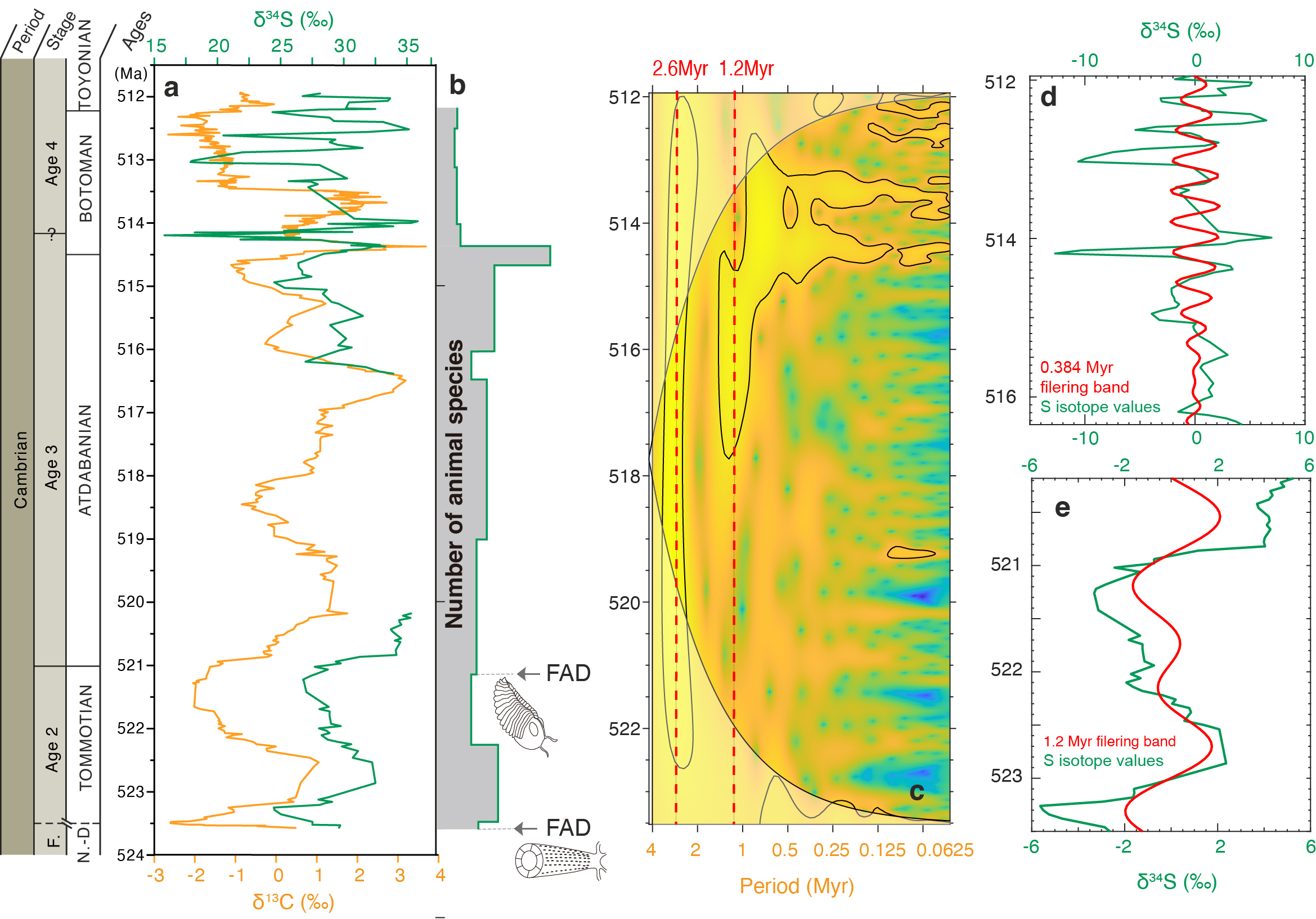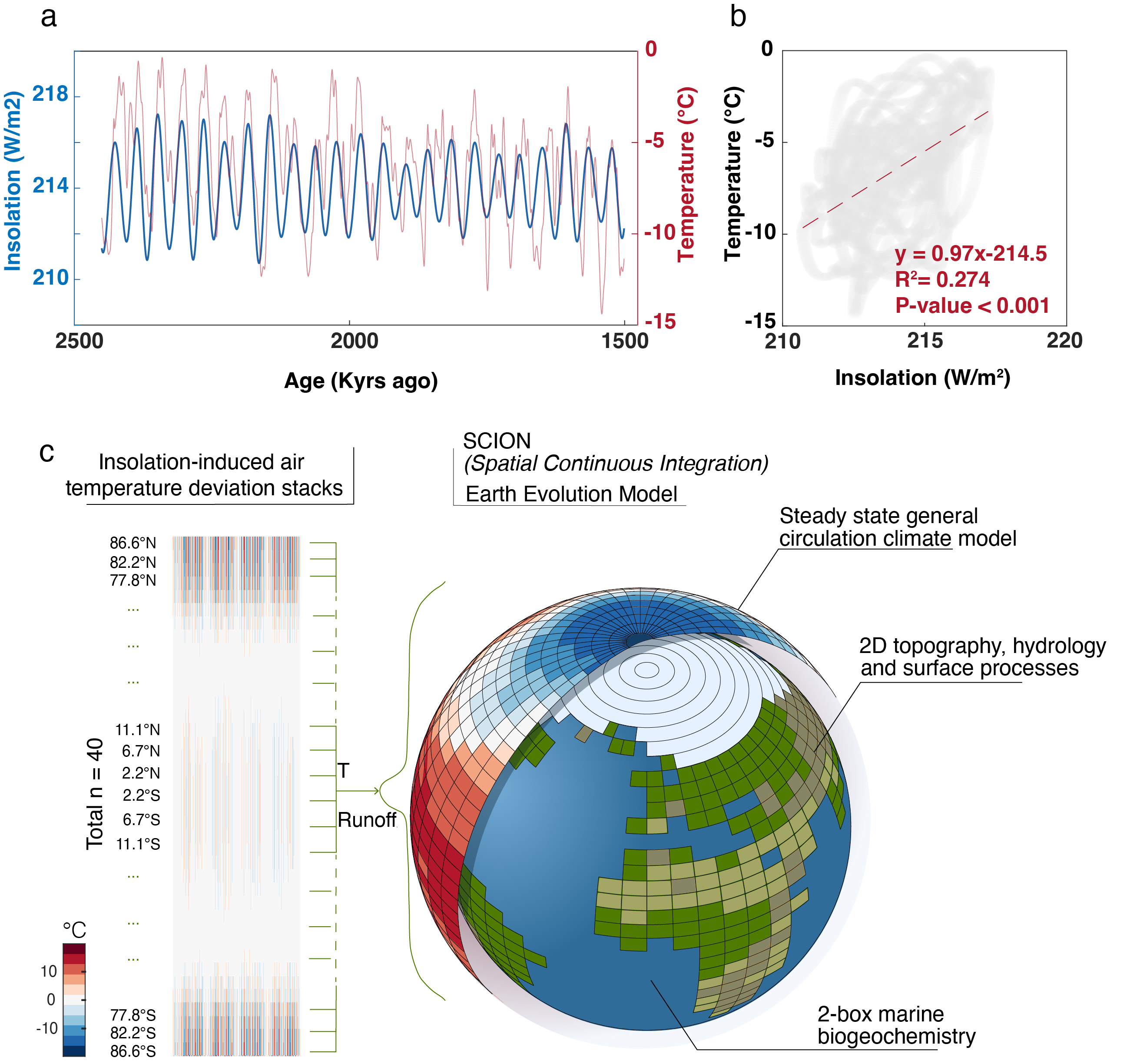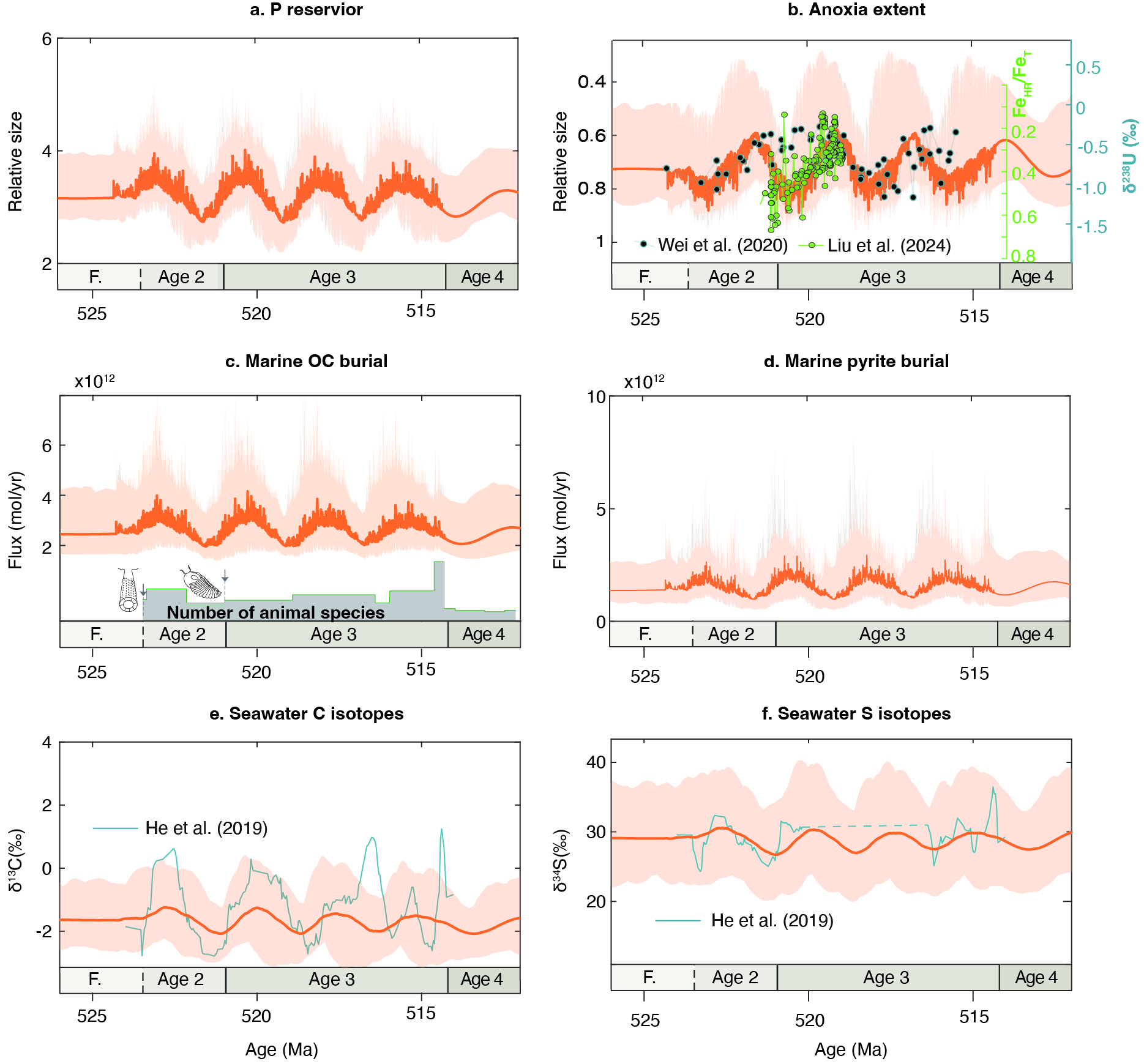Dr. ZHANG Yinggang, a postdoctoral researcher in Research Professor ZHU Maoyan's team at the Nanjing Institute of Geology and Palaeontology, Chinese Academy of Sciences (NIGPAS), in collaboration with Professors Benjamin Mills and Robert Newton (University of Leeds, UK), HE Tianchen (Hohai University), and YANG Tao (Nanjing University), has revealed that long-term orbital variations on million-year timescales may have acted as the “pacemaker” behind these oxygenation pulses. Their findings were recently published in Geophysical Research Letters.
The Cambrian Explosion represents one of the most critical milestones in Earth’s evolutionary history, during which nearly all modern animal phyla rapidly emerged. Fossil and geochemical evidence indicate that the early Cambrian diversification of animals occurred in multiple evolutionary pulses, accompanied by synchronous fluctuations in seawater inorganic carbon and sulfate sulfur isotopes. These variations have been interpreted as signatures of periodic oxygenation events in the atmosphere and shallow oceans. However, the driving mechanism behind these rhythmic oxygen pulses has remained elusive.
As early as 2019, ZHU’s Sino-British research team conducted a detailed study on well-preserved early Cambrian carbonate successions from the southeastern Siberian Platform. Their results revealed that during the early Cambrian (approximately 524–514 million years ago), marine animal diversity exhibited periodic fluctuations on a timescale of about 2–3 million years, which coincided with excursions in seawater carbon and sulfur isotopes. The team proposed that cyclic changes in the global burial of organic carbon and pyrite led to periodic variations in atmospheric and shallow-marine oxygen levels, thereby influencing the evolutionary dynamics of early marine animals. Following this earlier work published in Nature Geoscience, the team’s latest study further suggests that these million-year-scale environmental oscillations were likely driven by long-period orbital variations. Changes in Earth’s orbital configuration altered the distribution of solar radiation across different latitudes, leading to periodic climate fluctuations. Such climatic changes likely modulated the intensity of continental weathering and the flux of key nutrients, such as phosphorus, into the oceans. The cyclic input of nutrients would have stimulated marine photosynthesis and enhanced organic carbon burial, consequently driving periodic increases in atmospheric and oceanic oxygen levels.
To test this hypothesis, the researchers conducted spectral analyses of published early Cambrian carbon-sulfur isotope records, which revealed long-period cycles of 1.2, 2.6, and 4.5 million years, matching the frequencies of known long-term orbital cycles (Figure 1). By incorporating orbitally driven climate forcing into the SCION Earth system box model for the first time (Figure 2), they successfully reproduced the observed synchronous periodic variations in seawater carbon and sulfur isotopes, thereby confirming the plausibility of an orbitally forced oxygenation mechanism (Figure 3). Furthermore, model sensitivity experiments revealed that the low seawater sulfate concentration of the early Cambrian oceans rendered the Earth system particularly unstable, greatly amplifying the response of the coupled carbon–sulfur–oxygen biogeochemical cycles to orbitally modulated nutrient inputs. This finding provides new insights into the pacing of the Cambrian Explosion and offers a broader perspective for understanding long-term carbon, sulfur, and oxygen cycles in other geological intervals.
This research was jointly supported by the National Key Research and Development Program of China, the National Natural Science Foundation of China (NSFC), the Jiangsu Funding Program for Excellent Postdoctoral Talent, and the UK Natural Environment Research Council (NERC).
Reference: Zhang, Y., Mills, B. J. W., Newton, R. J., He, T., Roper, A., Yang, T., & Zhu, M. (2025). Orbitally-driven nutrient pulses linked to early Cambrian periodic oxygenation and animal radiation. Geophysical Research Letters, 52, e2025GL118689. https://doi.org/10.1029/2025GL118689.

Fig.1 Carbonate carbon and carbonate-associated sulfate sulfur isotopes. (a) Records from Cambrian Stage 2 to Stage 4 from the southeastern Siberian Platform. (b) Number of animal species. (c) Wavelet analysis of the carbon isotope record, and (d–e) 384 Kyr and 1.2 Myr filter output from the sulfur isotope record.

Fig.2 Orbitally induced climate approximation in the SCION model. (a) Comparison of solar insolation at 65°N with air temperature variations over 40–80°N in the past 1500–2450 kyr. (b) A cross plot of solar insolation at 65°N with the air temperatures. (c) Insolation-induced air temperature 2D deviation stacks in the revised SCION model schematic diagram.

Fig.3 SCION model outputs with key parameters varied within 20% uncertainty. (a) shelf nutrient phosphorus reservoir size. (b) anoxic seafloor extent compared to uranium isotope and iron speciation data. (c–d) marine organic carbon and pyrite burial on the shelf. (e–f) carbon-sulfur isotopes.
Download:
